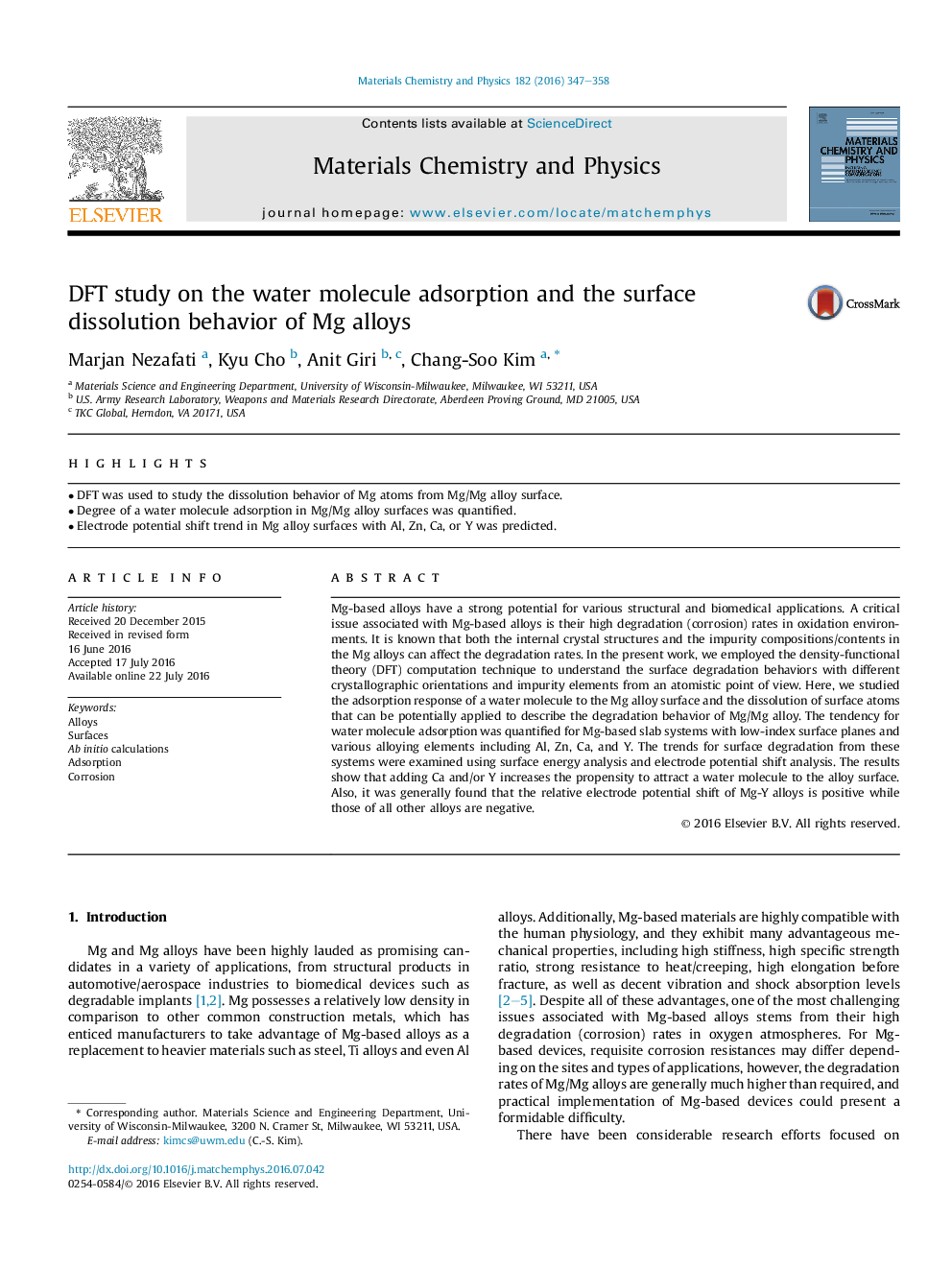| Article ID | Journal | Published Year | Pages | File Type |
|---|---|---|---|---|
| 1520407 | Materials Chemistry and Physics | 2016 | 12 Pages |
Abstract
Mg-based alloys have a strong potential for various structural and biomedical applications. A critical issue associated with Mg-based alloys is their high degradation (corrosion) rates in oxidation environments. It is known that both the internal crystal structures and the impurity compositions/contents in the Mg alloys can affect the degradation rates. In the present work, we employed the density-functional theory (DFT) computation technique to understand the surface degradation behaviors with different crystallographic orientations and impurity elements from an atomistic point of view. Here, we studied the adsorption response of a water molecule to the Mg alloy surface and the dissolution of surface atoms that can be potentially applied to describe the degradation behavior of Mg/Mg alloy. The tendency for water molecule adsorption was quantified for Mg-based slab systems with low-index surface planes and various alloying elements including Al, Zn, Ca, and Y. The trends for surface degradation from these systems were examined using surface energy analysis and electrode potential shift analysis. The results show that adding Ca and/or Y increases the propensity to attract a water molecule to the alloy surface. Also, it was generally found that the relative electrode potential shift of Mg-Y alloys is positive while those of all other alloys are negative.
Related Topics
Physical Sciences and Engineering
Materials Science
Electronic, Optical and Magnetic Materials
Authors
Marjan Nezafati, Kyu Cho, Anit Giri, Chang-Soo Kim,
